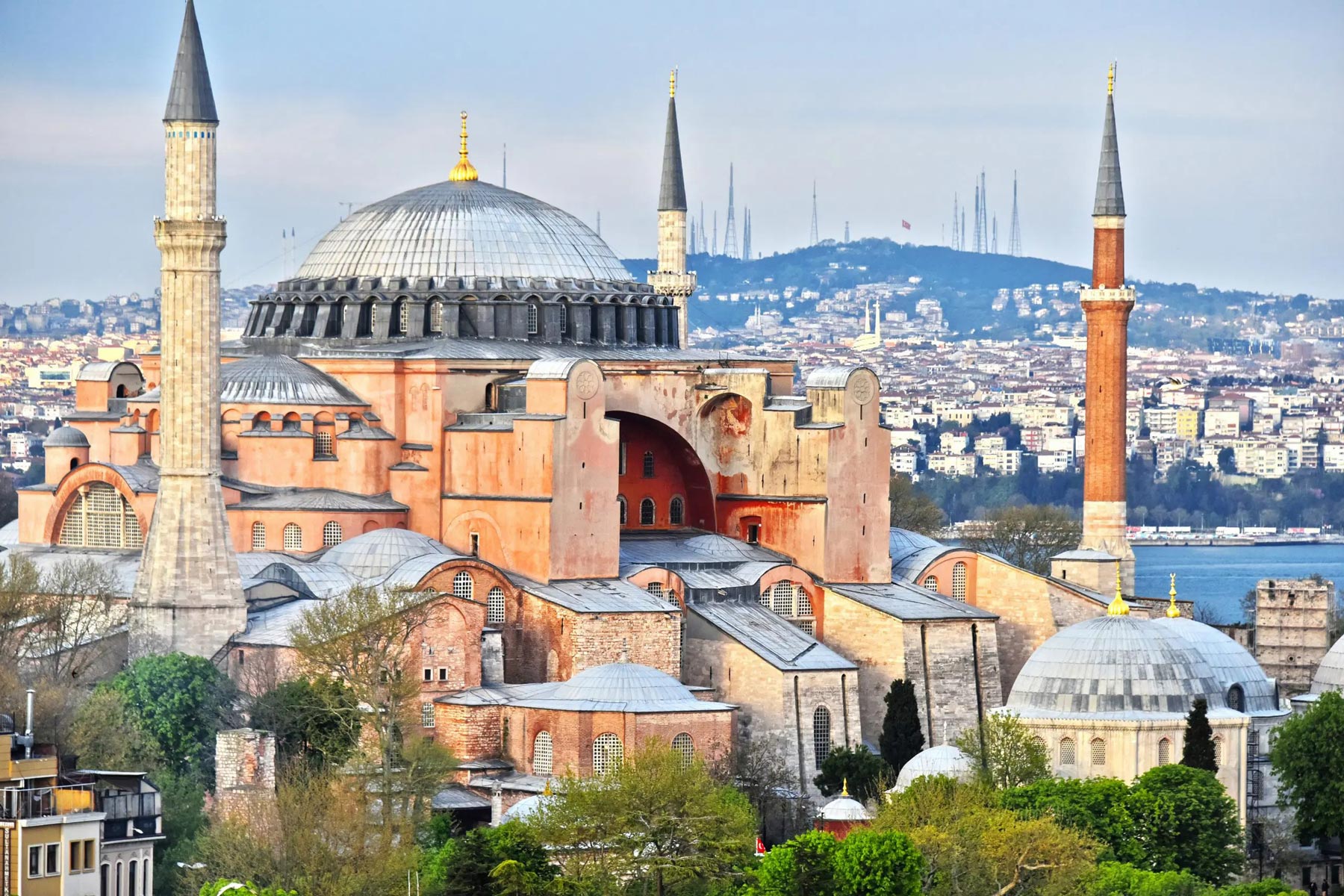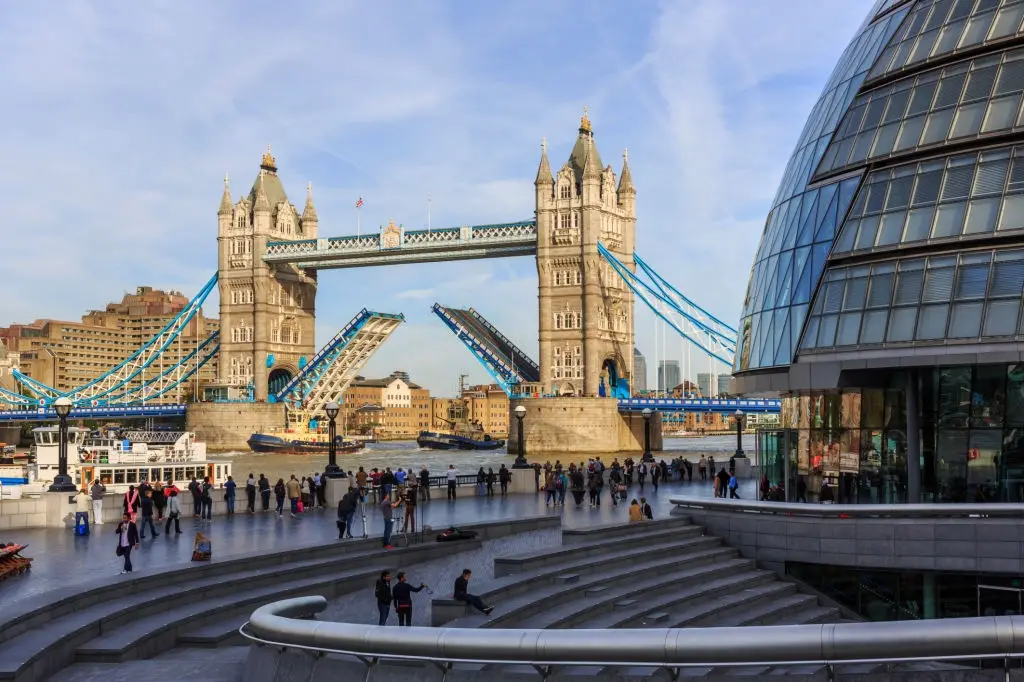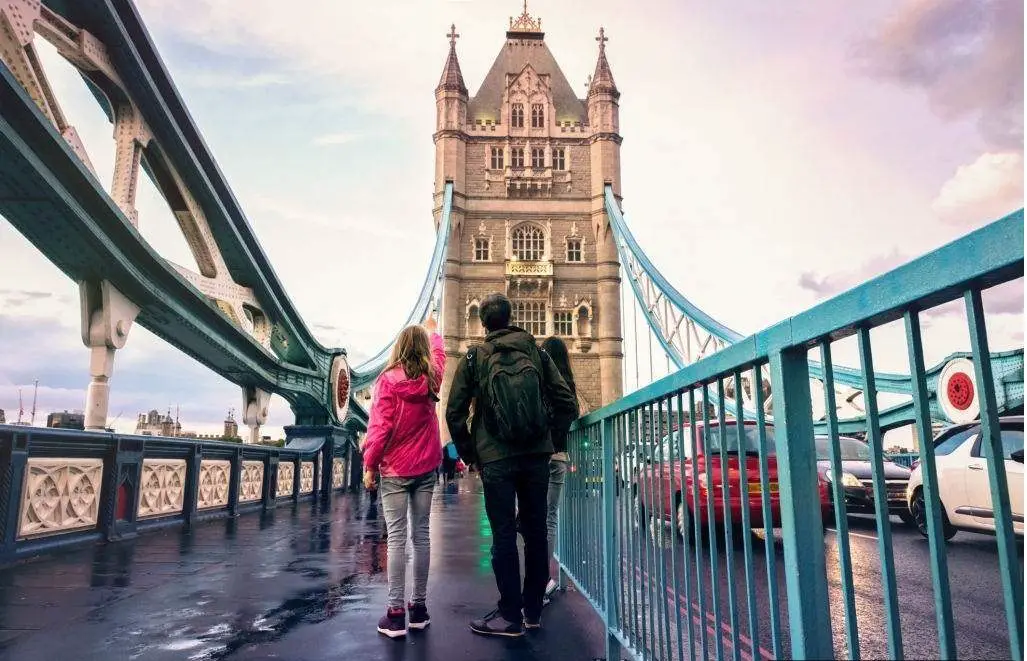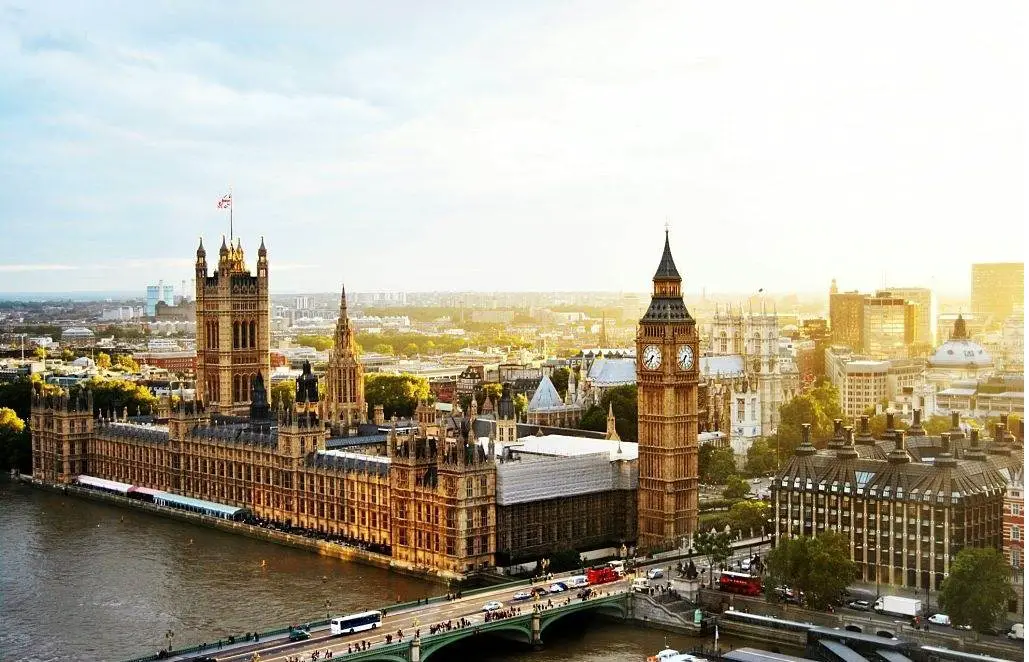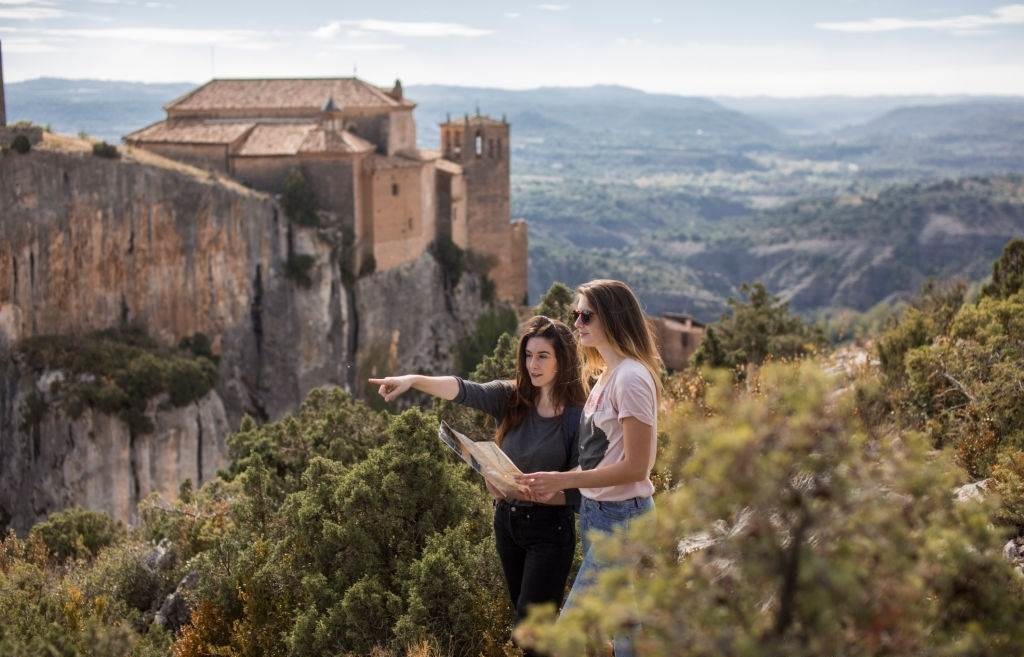The Hagia Sophia, officially Ayasofya-i Kebîr Câmi-i Şerîfi, has dominated Istanbul’s skyline since the year 537. Conceived by the Byzantine emperor Justinian I, the structure was intended to eclipse every church that had come before it, and for nearly a thousand years, it served as the largest enclosed space on earth. Its vast brick dome, hung over a floor plan shaped like a Greek cross, seemed to defy gravity and set the template for all Orthodox churches that followed.
After the Ottoman conquest of Constantinople in 1453, Sultan Mehmed II converted Hagia Sophia into an imperial mosque, preserving its Christian mosaics beneath layers of lime-wash and adding slender minarets, a mihrab, and glittering calligraphic roundels. In 1935, the young Turkish Republic turned the building into a museum, making its hybrid sacred art available to the world.
Since 2020, it has functioned as a mosque once more, though visitors of every faith are welcome outside prayer times. Few monuments anywhere compress so much artistic genius, religious meaning, and political drama into such a spectacular shell, and that is why a trip to Istanbul feels incomplete without stepping beneath Hagia Sophia’s luminous dome.
Planning Your Hagia Sophia Visit: Tickets, Hours, and Entrances
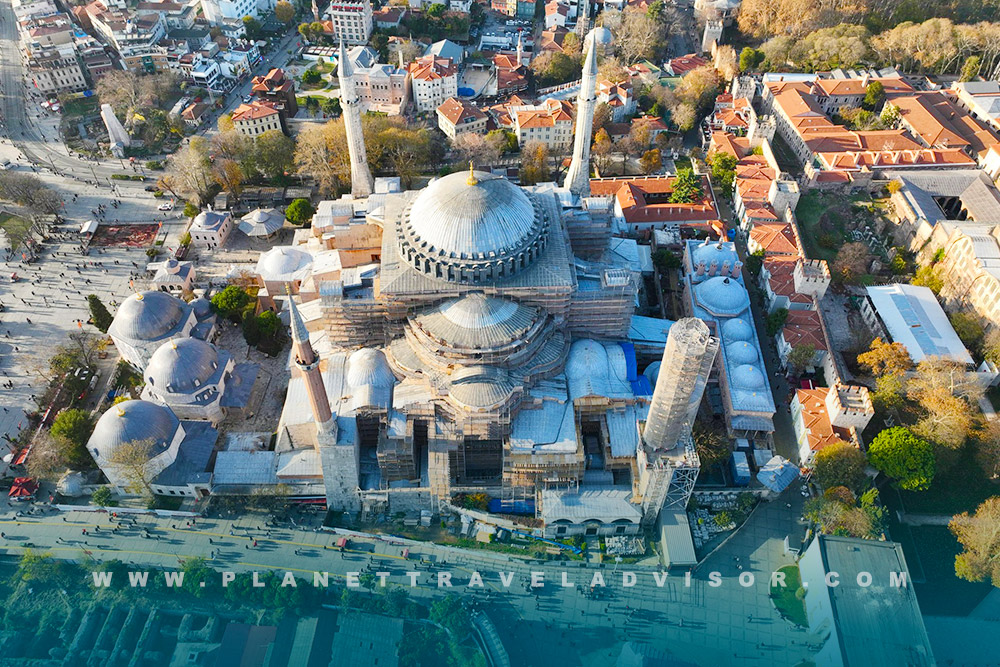
Foreign visitors currently pay an entrance fee of approximately €25 (₺850) if they are eight years old or above; children seven and under enter for free when proof of age is shown. Tickets can be purchased on-site, but queues in summer frequently exceed an hour, so buying an authorised “skip-the-line” voucher online can save considerable time. Tourists must use the dedicated visitor gate facing the rococo-style Sultan Ahmed III Fountain, directly opposite the Imperial Gate of Topkapı Palace. Once inside the outer courtyard, staff will direct you up a broad stone ramp to the upper gallery. This change, introduced in 2024, allows worshippers to use the ground floor undisturbed while still giving sight-seers a commanding panorama of the sanctuary below.
Hagia Sophia opens to tourists from about 09:00 until roughly one hour before sunset, but it closes five times a day for Islamic prayers. The duration of each closure is usually ninety minutes, although Friday noon prayers can stretch longer. Exact prayer times shift daily, so check the Diyanet mobile app or any hotel reception board the evening before your visit. Security screening is airport-style: liquids over 100 ml are confiscated, and tripods are banned, although compact monopods are usually tolerated outside peak hours. Wheelchairs enter free of charge through a separate gate that faces the Hippodrome; be aware, however, that the ancient interior ramps rise at a steep eight-to-ten-percent gradient, making assistance advisable for powered chairs.
Dress code is conservative. Both men and women must cover their shoulders and knees, and women must also cover their hair. Disposable blue headscarves and wrap-around skirts are sold at the door, but bringing your light scarf and wearing long trousers or a midi-length skirt will help you glide through the checkpoint. Shoes stay on while you tour the upper gallery, but if you are invited onto the turquoise prayer carpet downstairs, you will need to remove them.
When to Experience Hagia Sophia: Seasons, Crowds, and Weather
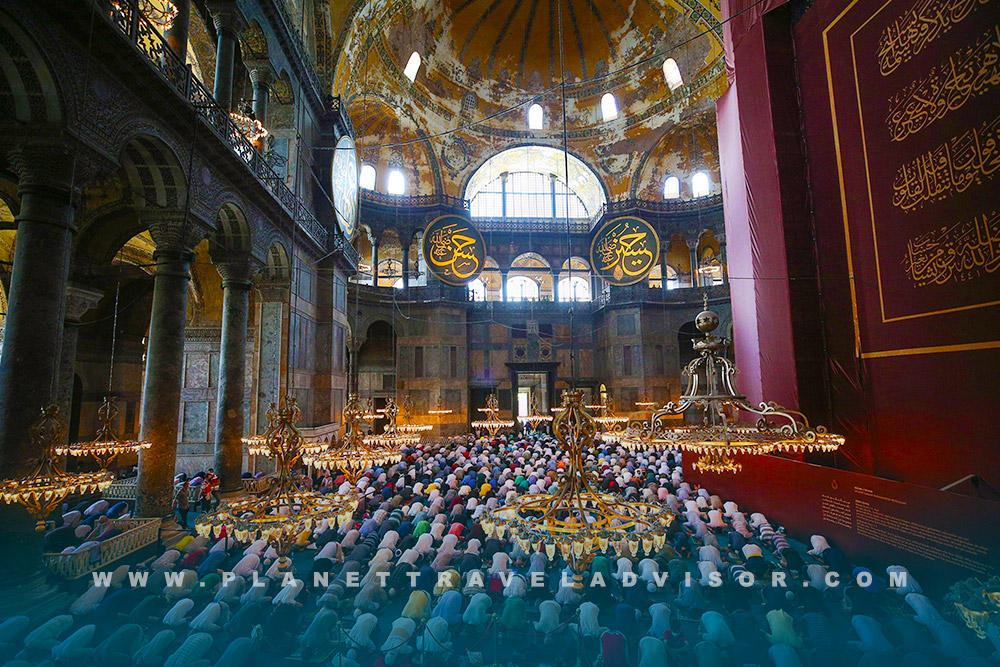
Istanbul’s climate follows the Mediterranean pattern of hot, humid summers, mild spring and autumn shoulder seasons, and chilly, rain-soaked winters. From June through August, temperatures hover around 30 °C, cruise-ship berths line the Galata port, and hotel prices in Sultanahmet can double. Visit Hagia Sophia at opening time or in the last ninety minutes before closing if your itinerary forces you into midsummer travel. In contrast, April to May greets visitors with blooming tulips in nearby Gülhane Park, sunny 18-to-24 °C days, and crowd levels that are typically thirty percent lower than in July. September and October offer similarly comfortable weather, golden light that flatters the building’s brickwork, and reliably calm conditions on the Bosphorus, perfect for the rooftop photographs everyone comes to capture.
Winter, stretching from November to early March, trades shorter daylight and a fifty-to-sixty-percent chance of rain for the cheapest airfares and hotel bargains you will find all year. February, in particular, sees trans-Atlantic return fares dip almost fifty percent below their July highs. A winter visit also means you can study Hagia Sophia’s mosaics in relative peace, listening to your footsteps echo across the ancient marble instead of navigating selfie sticks.
Keep an eye on the lunar calendar: during Ramadan, the tourist opening window shrinks, especially near sunset when the faithful gather to break the fast. The morning of Eid al-Fitr draws tens of thousands to Hagia Sophia for communal prayer, and security barriers can block casual sightseeing for half a day. Late October brings Republic Day fly-pasts over the Golden Horn, which is thrilling to watch but can trigger street closures on the historic peninsula. The first Sunday in November is marathon day, and the route often threads through Sultanahmet Square, so schedule your Hagia Sophia time slot for early morning or late afternoon if you are in town that weekend.
Understanding Hagia Sophia’s Architectural Marvel
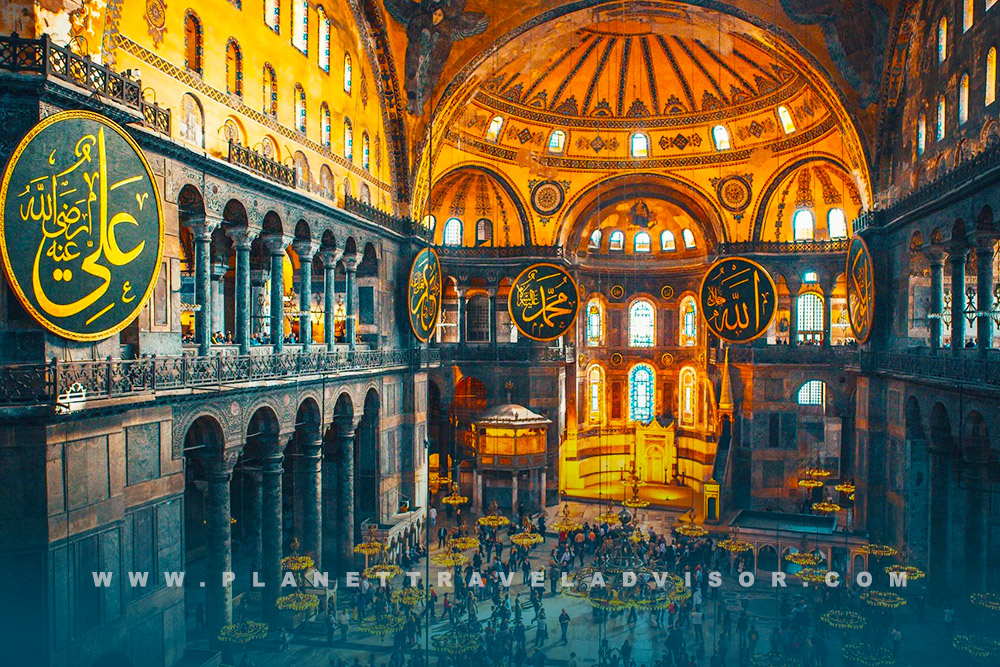
Nothing prepares you for the spatial drama that erupts when you step into Hagia Sophia’s nave. The main dome soars 55.6 metres above the floor, supported not by solid walls but by four colossal piers and a cascade of half-domes, exedrae and pendentives, those triangular masonry sails that allowed Byzantine architects to set a circular dome on a square base. Light enters through forty windows at the dome’s base, making the dome appear to float like a halo. From the gallery, you will also notice the deliberate off-axis alignment of the mihrab, installed by the Ottomans to orient worshippers toward Mecca, and the floor mosaic beneath it, which marks the spot where emperors once knelt for coronation.
The upper gallery shelters some of Christendom’s finest mosaics, each created from glass tesserae no larger than your fingernail. The Deësis panel, dated to 1261, shows Christ flanked by the Virgin Mary and John the Baptist, their faces rendered with startling psychological depth. Nearby, a marble balustrade bears Nordic runes carved, most likely by a bored Varangian Guardsman, around the ninth century. Peer closely to find the words “Halvdan was here,” tangible proof that Hagia Sophia was a crossroads even in the Viking Age.
Eight circular wooden medallions, each seven-and-a-half metres across and painted with the names of Allah, Muhammad, and the first Caliphs, hang beneath the dome. Fashioned from linden wood in the nineteenth century, they blend seamlessly with marble columns quarried in Egypt, green Thessalian stone salvaged from pagan temples, and porphyry shipped from the distant Red Sea. Every inch of Hagia Sophia tells a story of empire, devotion, and technical audacity.
Respectful Conduct Inside Hagia Sophia
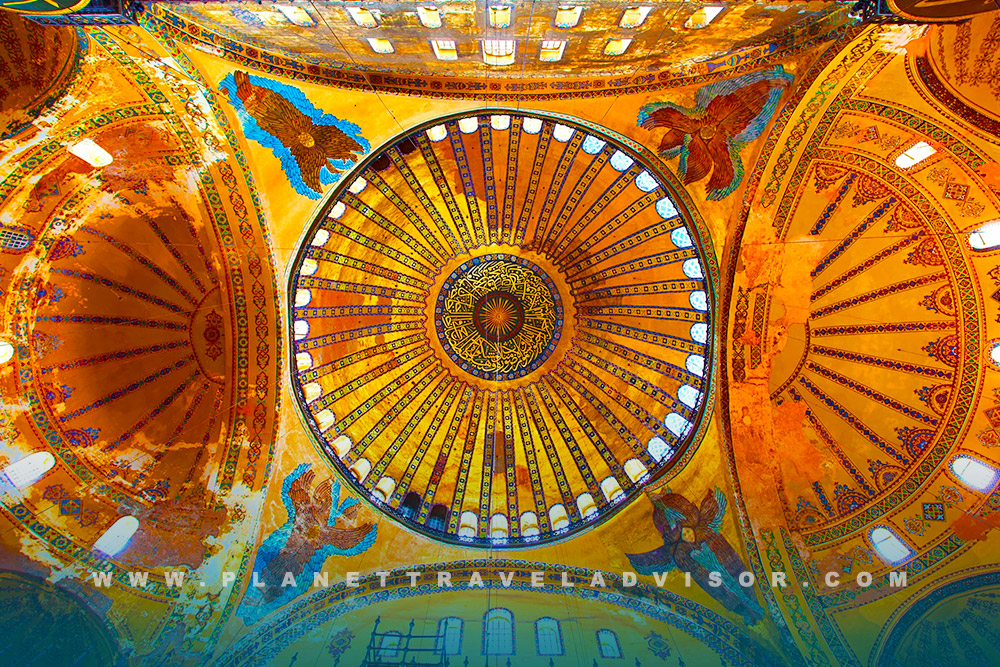
Because Hagia Sophia functions primarily as a mosque, visitors should maintain a calm and respectful demeanour. Speak softly, avoid photographing worshippers at close range, and never cross the rope barriers that protect the central prayer carpet unless you are invited. Flash photography is prohibited, partly to protect delicate gold-leaf mosaics, and security guards will ask you to retract selfie sticks if the space becomes crowded.
Modesty in dress is not merely a request; it is a condition of entry. Even if you see other tourists bending the rules, covering up shows respect for Turkish culture and ensures that the building remains accessible to everyone.
Accessibility and Practical Tips for Hagia Sophia
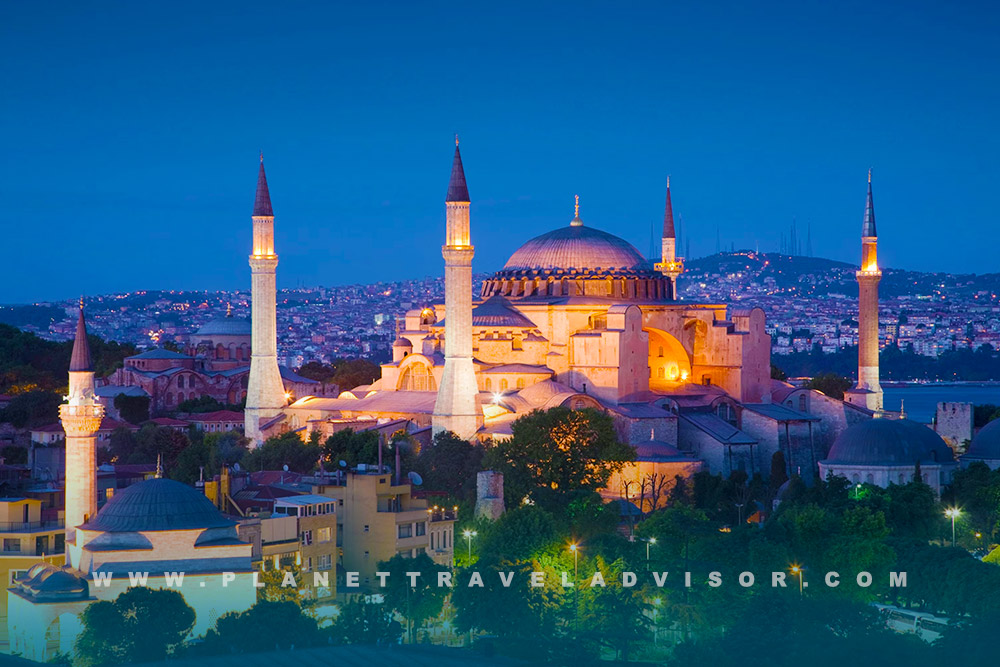
The paths around Sultanahmet Square are mostly flat, but the ancient cobblestones can catch wheelchair wheels, so consider sturdy rubber tyres or a manual chair with helper handles. Once through security, wheelchair users should take the citizen entrance on the western façade, which leads to the ground floor. The ramps to the upper gallery climb steeply and have partial handrails, so electric chairs may need a push. Guide dogs are allowed, though you may be asked to present vaccination papers. Audio guides are hired via a QR code at the ticket desk; the files are compatible with most screen readers, but bring your headphones because rentals sell out quickly in high season.
Free drinking fountains sit at the Hippodrome edge adjacent to the German Fountain, and filling a reusable bottle will spare you inflated kiosk prices. Credit and debit cards are accepted for tickets, but small cash notes smooth transactions in nearby cafés and souvenir stalls. Cellular coverage inside Hagia Sophia is patchy; if you intend to livestream, record video for later upload instead. Finally, remember that your entrance fee funds ongoing structural reinforcement against earthquakes, so resist any temptation to pocket loose marble chips or peel away mosaic tesserae.
A Perfect Day Around Hagia Sophia
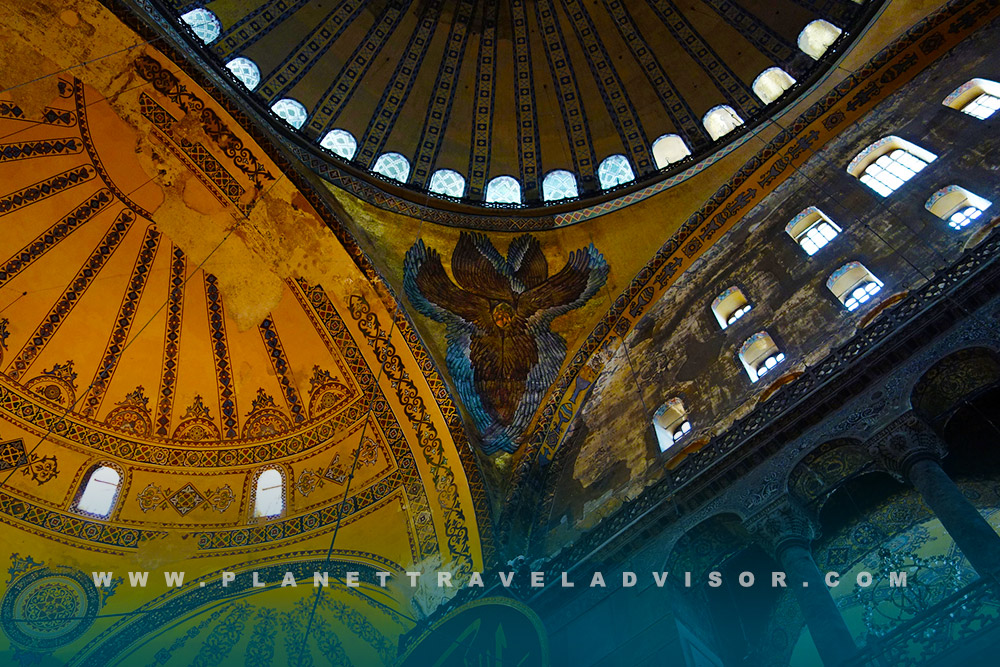
Start your day just after sunrise, when the first pink light kisses Hagia Sophia’s brickwork and the call to prayer drifts across the Bosphorus. Arriving at the visitor gate by 08:45 positions you among the first group through security. Spend about seventy-five minutes circling the gallery, lingering over the Deësis mosaic and watching shafts of light sweep across the nave.
When the staff announces the impending closure for the midday zuhr prayer, exit through the vestibule and walk two minutes to the Basilica Cistern, an underground forest of recycled Roman columns immortalised in James Bond films. Lunch on Sultanahmet köfte, spiced meatballs perfected over nine decades, followed by a stroll to Topkapı Palace. By late afternoon, climb the rooftop terrace of the Seven Hills Hotel for a cup of steaming Turkish tea and a postcard-worthy sunset view of Hagia Sophia glowing gold against the indigo sky.
Conclusion: Listening to the Echoes of Hagia Sophia
Standing beneath Hagia Sophia’s floating dome is a lesson in humility. Fifteen centuries of believers, conquerors, emperors, and tourists have gazed upward at the same circle of light. Prepare thoroughly, time your visit, dress respectfully, read a little history, and the building will reward you with an experience that transcends faith and nationality. Hagia Sophia is not merely a stop on an itinerary; it is a dialogue across centuries, spoken in stone, mosaic, and sunlight. May your footsteps add softly to that timeless conversation.
Uncover the wonders of Turkey with our expertly crafted Turkey trips, your gateway to ancient history, vibrant culture, and stunning landscapes. Enjoy fast-track entry to top attractions, stays in charming boutique hotels, and insider knowledge from seasoned local guides. Book now to secure exclusive seasonal offers and limited departure dates for spring and autumn. Let Istanbul, Cappadocia, and Ephesus leave you breathless. Reserve your spot today.

